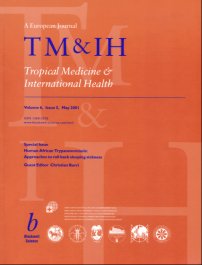Seasonal and gestation-stage associated differences in aflatoxin exposure in pregnant Gambian women
Abstract
Objective Aflatoxin is known to cross the placental barrier and exposures in utero could influence genomic programming, foetal growth and development, resulting in long-term health effects. We aimed to determine aflatoxin exposure in Gambian women at two stages of pregnancy and during the rainy and dry seasons. Methods We examined aflatoxin exposure in pregnant Gambian women at early (<16 weeks) and later (16 weeks onward) stages of pregnancy and at different times of the year, during the rainy (June to October 2009) or dry (November to May 2010) season, using aflatoxin–albumin adducts (AF-alb). Results Mean AF-alb was higher during the dry season than in the rainy season, in both early and later pregnancy although the difference was strongest in later pregnancy. There was a modest increase in AF-alb in later than early pregnancy (geometric mean 41.8 vs. 34.5 pg/mg, P < 0.05), but this was restricted to the dry season when exposures were generally higher. Conclusions The study confirmed that Gambian pregnant women were exposed to aflatoxin throughout the pregnancy, with higher levels in the dry season. There was some evidence in the dry season that women in later pregnancy had higher AF-alb levels than those in earlier pregnancy. Further research on the effects of exposure to this potent mutagen and carcinogen throughout pregnancy, including the epigenetic modification of foetal gene expression and impact on pre- and post-natal growth and development, are merited.

